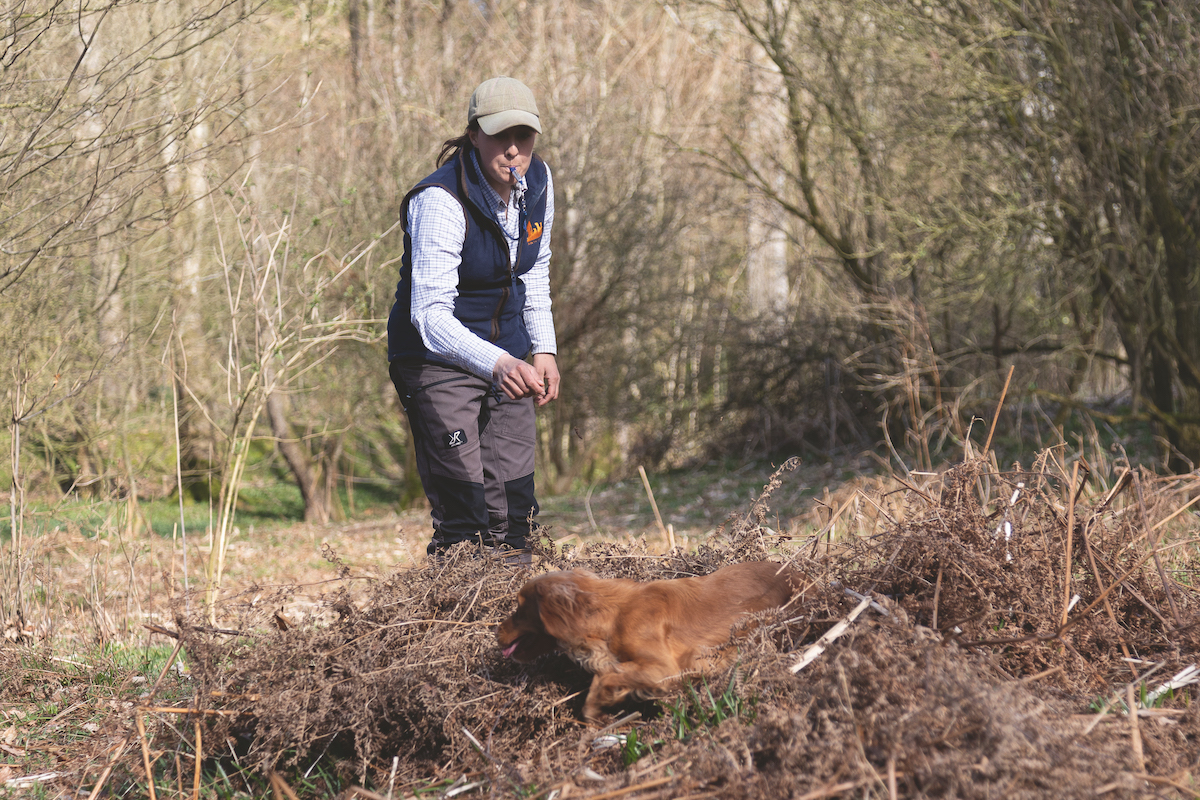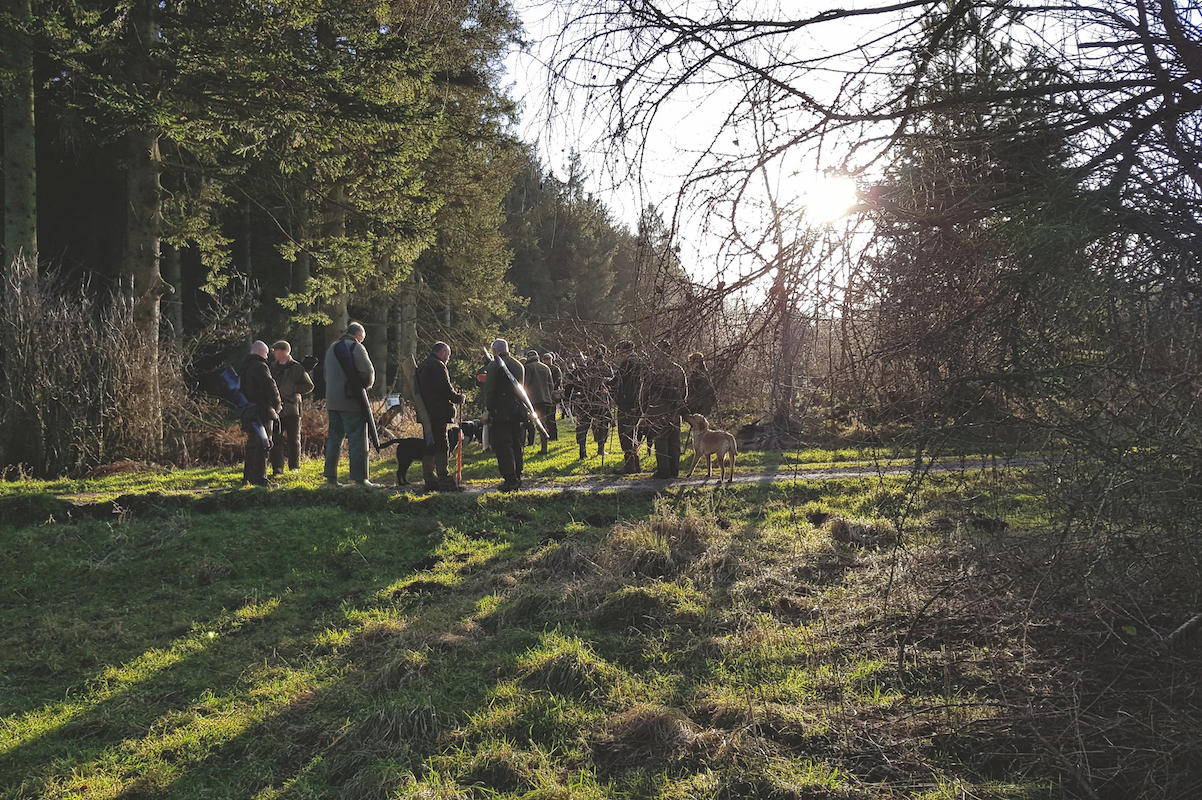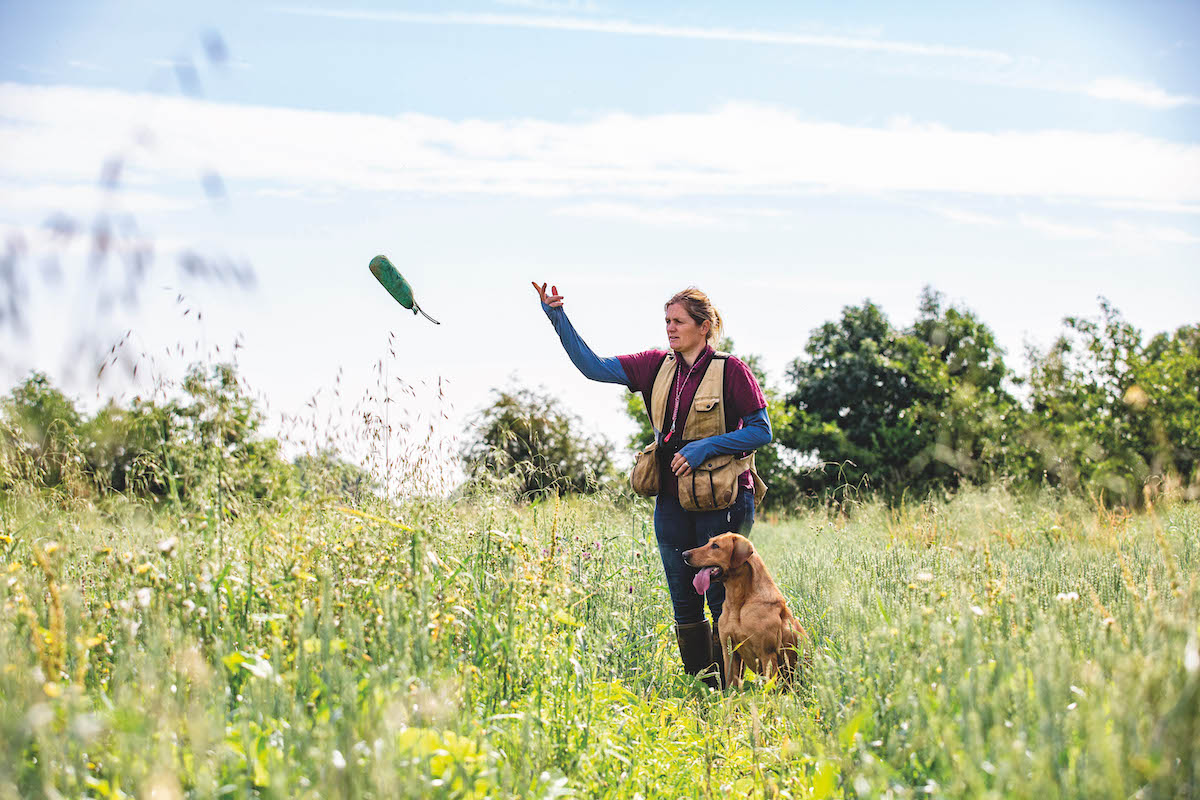Why it’s important to accentuate the positive when dog training
There are four basic approaches to dog training and it is vital that you, the handler, understand how to use them, says Ellena Swift
The world of gundog training is a rapidly changing place and handlers are now more than ever working on improving their dogs’ skills as well as their own. During the COVID-19 lockdown I have sadly not been able to get Sika to me for training, so I am working with the dogs I have here.
I have already discussed some very simple training drills handlers can do within the confines of their house to help their gundog work. But a handler can also work on another vital subject: understanding. This means the handler’s knowledge of training theory. Never before have the vast majority of people had the opportunity to read, learn and reflect on their own skills to such an extent.
Most dogs have unbelievable potential and the key to unlocking it is not by following a black-and-white instruction manual. If that were the case, every dog would be a field trial champion. This is the most important thing that all trainers and handlers need to learn; how to adapt your own training techniques to suit each dog.
There are many theories and even more opinions on how to train a dog. You only need to log on to one of the gundog training groups on Facebook to view the hundreds of comments giving training advice by the self-professed experts.
But what do we really understand about all the varying approaches and how can this understanding be applied? There are four basic approaches that can be taken: positive reinforcement, negative reinforcement, positive punishment and negative punishment.

Discouraging jumping up
Positive punishment
Positive punishment has long been a commonly used technique in old-school dog training. This simply means using something that the dog finds aversive. This is added to their environment. It can be a word or gesture — such as shouting at the dog or tapping it on the nose — or even something as simple as a stare. These are all forms of punishment that are introduced when the behaviour of the dog is undesired.
There is a lot of criticism of this approach and rightly so in many cases. Bullying or the physical abuse of any dog is never required. However, used correctly light positive punishment is valuable. Like children, all dogs need boundaries. It is also extremely important that all dogs — whether they are a pet or working dog — have respect.

Ellena uses tone of voice to let her dogs know she disapproves of their behaviour
Some dogs rarely require any form of positive punishment. Their nature means that they need no more than a simple look or slightly altered tone of voice to understand. However, others by nature are more likely to test and push their boundaries. Tone of voice is invaluable and one thing I use with all my dogs. When they are displaying a behaviour I do not want, such as excessive licking or jumping up, I will use a firm ‘no’ or ‘ah ah’. The tone is very different to the one I use when they do something good.
Dogs can pick up on emotion very well through body language and tone of voice. This is why it is so important — particularly when they are learning and/or are young — to sound and act excited and happy when they have done something right. For the vast majority of the time your tone should be calm, confident and relatively quiet. The dog is much more likely then to respond if ever you do need to raise your voice.

If your dog refuses to stay in sit when you ask it to at feeding time, remove the bowl and wait …
Negative punishment
A negative punishment is where something pleasant to the dog has been removed or taken away. The label sounds awful and many people think (incorrectly) that this is potentially a horrible way of training. However, once it is understood it can be used very well. If treats or toys are used in training negative punishment will be used. For example, when teaching a young dog to remain in sit for their food, if they move I will simply lift their bowl up and stand patiently waiting for them to sit. When using treats or toys, if the dog does not get the task right, then that toy or treat will be withheld or removed so they do not encourage the wrong behaviour.

… replacing the bowl when the dog goes back into sit and remains in sit while it is put down
This can be an extremely helpful tool if used correctly and with the right dog. For obvious reasons, this type of training will not work if the dog does not value what the handler intends to remove. Many spaniels are not particularly food motivated and so withholding a tasty treat will not worry them at all and so will not work.
Depending on the temperament of the dog, the negative punishment approach can also lead to frustration and either lack of interest or even aggression. So it is important that before this is used, the dog clearly understands what is required of them and is only asked to do what they can achieve and cope with.

Ellena throws a dummy to the dog as a reward for stopping on the whistle
Positive reinforcement
Positive reinforcement is a real buzzword within the dog training industry and trainers should accentuate the positive when dog training as much as possible. Put simply, it means that the dog is rewarded for the behaviours required by the handler using something the dog enjoys and values. This can be treats, toys or even praise or fuss from the handler.

Positive reinforcement
The vast majority of gundog trainers use their voice and praise in all training. Some I have seen using treats and toys. I often use a tennis ball as a reward for puppies and young dogs. The majority of dogs I train have a high drive for retrieving and chasing, so a ball is ideal. As an example, when training the stop whistle: as the dog is playing I blow the stop and immediately as the dog glances at me I throw the ball to them. The next time I do it the dog is a lot sharper to look at me and very happy to stop. The stop whistle becomes a positive and happy association. I also use negative punishment. When I blow the stop whistle, if the dog doesn’t remain where it is or tries to run back to me, I withhold the tennis ball. This is a very good example of how both these approaches of training can be used.

Ellena encourages German shepherd Mamba to sit by pushing her rump to the ground
Negative reinforcement
The word ‘negative’ often brings up thoughts and assumptions of something unpleasant. However, negative does not necessarily have to mean bad. Negative reinforcement means the removal of something negative when the correct behaviour is achieved. It is an effective tool if used correctly and with care.
A simple example is using a slip lead or gentle leader (a type of head collar). Both devices will go tighter when the dog puts pressure on to pull and walk in front or away from the handler. The very second the dog offers to remove that pressure the devices will go loose and become more comfortable.
Another example might be when a dog’s bottom is pushed to the ground to encourage the sit, and the hand is only removed once the dog is sitting.

Ellena takes her hand away when the little dog sits
So this is not the introduction of something unpleasant or negative but something that is already there for the dog to choose how it behaves.
This approach is certainly the least used in the UK and rightly so. The issue arises because, in order for there to be something unpleasant to remove, it needs to be introduced in the first place. A little research and you will find that this training approach is more commonly used in the US, with ear pinching, force-fetch and electric collars considered the norm.
While I do not deny that results are achieved, I would rather use a balanced combination of the other three approaches. In an ideal world all any gundog trainer would require is positive reinforcement; however, for the vast majority this is not practical or possible.
Combinations
With my team of dogs, I am fortunate that their lines are naturally very biddable and willing to please. This means that I can primarily use a combination of positive reinforcement — introducing something pleasant — and negative punishment, withholding something pleasant, to teach them the skills they need.
I continue to use these two throughout training. You will see examples of both in the vast majority of my articles. For example, using a ball dropper: I ask the dog to hunt and leave it hunting for a short time before dropping a ball for them to find as a reward for holding the area and continuing on to hunt.
However, if the dog leaves the area or stops hunting I will withhold the ball. Obviously with positive punishment — introducing something aversive — and negative reinforcement, having something negative in place that you remove once the desired behaviour is achieved, should only be used with great care when any other approach is not available. I have written before about how important the bond is between dog and handler and these two approaches can easily damage that.
When training your dog it is important you understand these methods and how they are applied. Even more important is that you understand each individual dog and what approach would best suit them, not you. If you can achieve that, you are going to get the best out of your dog and in the most pleasurable way possible.








